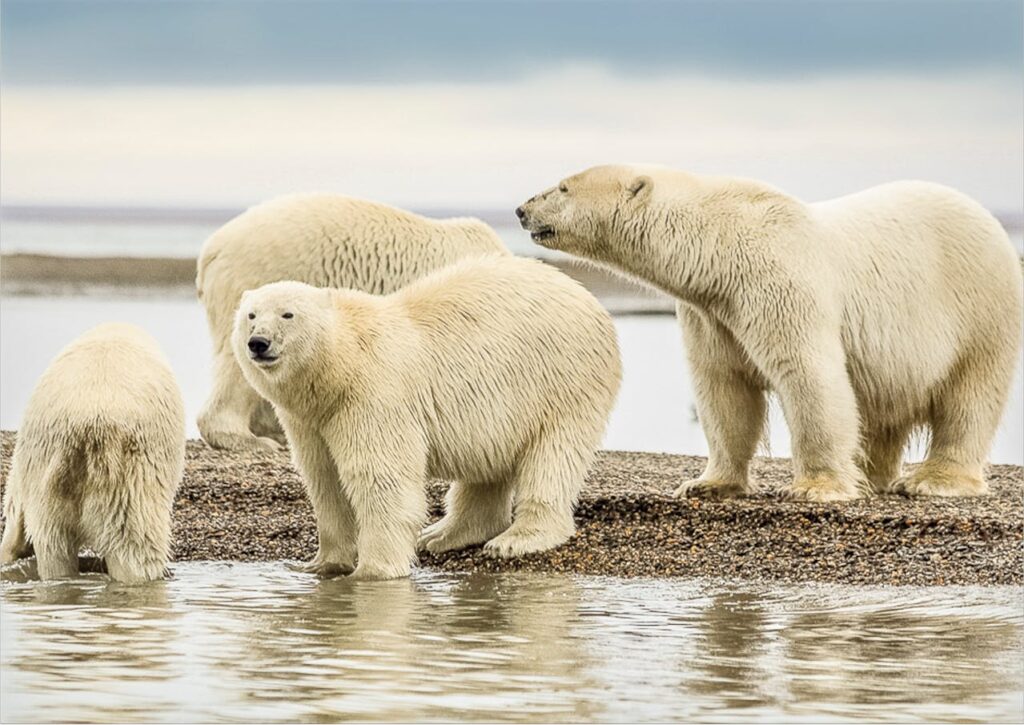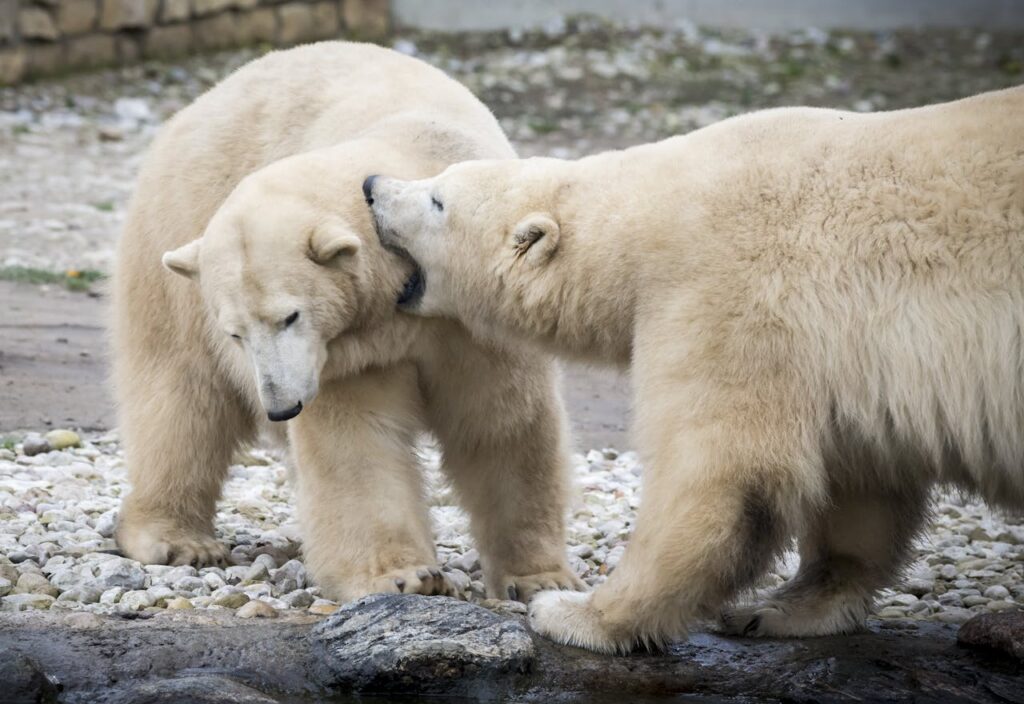Where Are the Polar Bears? Uncovering Why They Don’t Live in Antarctica
Picture this: a vast, icy landscape where snow stretches forever, and a powerful white bear lumbers across the horizon. Sounds like Antarctica, right?
Not quite.
Despite the similarities between the Arctic and Antarctic, both frigid, remote, and full of ice, polar bears aren’t found at the South Pole. In fact, they live exclusively in the Northern Hemisphere. But why is that? If both poles have the right conditions, couldn’t polar bears survive down south? This article dives into the biological, ecological, and historical reasons why polar bears are absent from Antarctica.
We’ve crawled through the top sources on the internet, compiled the most accurate and engaging facts, and added the latest scientific insights so you can get the full picture, no frostbite involved!
The Short Answer: No, There Are No Polar Bears in Antarctica
Let’s start with the quick answer: there are no polar bears in Antarctica. Polar bears (Ursus maritimus) live entirely in the Arctic region, circling the North Pole, and their habitat spans across countries like Canada, Russia, Greenland, Norway (Svalbard), and the United States (Alaska).
Meanwhile, Antarctica is located at the Earth’s South Pole, and it’s home to a completely different set of species like emperor penguins, leopard seals, and krill.
But Why Not? Antarctica Seems Like a Perfect Habitat
The South Pole seems like it would offer plenty for a polar bear: cold temperatures, ice for hunting, and no human settlements to worry about. So what’s stopping them? There are several reasons, and they shed light on evolution, continental drift, and delicate ecosystems.
1. Evolution and Geography: They Never Got There
The most fundamental reason polar bears don’t live in Antarctica is simple: they never evolved there.
Polar bears evolved from brown bears around 500,000 years ago, adapting to the icy environment of the Arctic. Over thousands of generations, they developed traits like white fur for camouflage, a thick fat layer for insulation, and specialized hunting strategies for catching seals on sea ice.
Antarctica, on the other hand, has been isolated geographically for about 30 million years. Surrounded by the Southern Ocean, it is essentially sealed off from the rest of the world. Animals that live there today either evolved there or arrived via ancient land or ice bridges — neither of which connected to the Arctic.
There is no natural pathway for polar bears to migrate from the Arctic to Antarctica. It’s roughly 20,000 kilometers away. Even if they could swim vast distances, which they occasionally do in the Arctic, crossing oceans and equators is biologically and practically impossible.
2. Ecosystem Imbalance: The Penguins’ Arch Nemesis?
One of the most popular myths online is that polar bears were “kept out of Antarctica to protect the penguins.” While that explanation simplifies things, it’s not entirely off base.
If polar bears were suddenly introduced into the Antarctic ecosystem, their top predator status would create chaos. Penguins, which evolved without land predators, would be particularly vulnerable. Because they have no evolutionary experience with a land apex predator, their threat-response behaviors are limited. Polar bears could feast freely with very little resistance.
This hypothetical situation is a classic example of what ecologists call an “invasive species” scenario. Such introductions have a history of permanently damaging ecosystems, think rabbits in Australia or Burmese pythons in Florida.
3. Hunting Strategies Require Sea Ice, Not Ice Caps
Polar bears are technically marine mammals. Like whales or seals, they depend on the ocean, specifically, on sea ice that floats on top of the water, serving as a platform for hunting seals.
Antarctica does have sea ice, but its ecology doesn’t support the same food web. Instead of large seals lounging on ice floes, most Antarctic species feed underwater on krill and small fish. There simply aren’t the right type or quantity of prey to support a bear that needs 4.5 kg (10 lbs) of fat-rich food per day.
4. It’s Too Far, and Even More Isolated Than the Arctic
Antarctica is the most isolated continent on Earth. It has no native human populations, no land predators, and no bridges to other continents. The ocean currents surrounding Antarctica include the Antarctic Circumpolar Current, effectively restricting the movement of warm ocean waters and species migration.
In contrast, the Arctic is ringed by continental land masses, making it easier for species to move and interact. Polar bears benefit from this arrangement because they can travel between ice and land for food or raising cubs.
Could Polar Bears Survive If Introduced to Antarctica?
In theory, yes, they could survive for a time. The temperature and terrain are similar. But their survival would come at a cost to the native ecosystem. They’d likely decimate penguin populations or compete with seals, ultimately destabilizing the food chain.
Moreover, polar bears can only reproduce under very specific conditions. Female bears dig dens in snowdrifts near shorelines and give birth to cubs that rely on a very narrow window of fat-rich nourishment and isolation. Such conditions might not be met in Antarctica’s ice-covered environment, which lacks similar shoreline geography.
A Tale of Two Poles: Arctic vs. Antarctica Comparison Table
| Feature | Arctic (North) | Antarctica (South) |
|---|---|---|
| Dominant Land Mass | Ocean surrounded by continents | Continent surrounded by ocean |
| Polar Bear Population | Yes | No |
| Penguin Population | No wild penguins | Yes |
| Average Winter Temperature | -30°C | -60°C |
| Human Inhabitants | Indigenous populations, towns | No permanent residents |
Wait… Have Polar Bears Ever Been to Antarctica?
Not in the wild. The only polar bears that have ever set paw on Antarctic soil did so in zoos, or in some rare artistic or fictional work. For example, in 2003, a nature documentary spliced together polar bear footage with Antarctic scenes to create dramatic visuals, prompting confusion among viewers.
Some climate awareness campaigns use juxtaposed images of penguins and polar bears to draw attention, despite the fact they live at opposite ends of the Earth.
Could Climate Change Bring Polar Bears to Antarctica?
This is a common question and a fair one, considering rapid polar melting.
But even in future warming scenarios, it’s highly unlikely that polar bears would naturally migrate to Antarctica. That journey would require human intervention (like relocation) and would almost certainly result in ecological disruption. More realistically, climate change threatens polar bears by reducing their sea ice habitat, ultimately endangering their survival in the north, not expanding their range to the south.
Frequently Asked Questions
Do Polar Bears Eat Penguins?
No. Polar bears and penguins don’t coexist in the wild. Polar bears live in the Northern Hemisphere, while penguins live primarily in the Southern Hemisphere, with several species concentrated in Antarctica.
Could We Introduce Polar Bears to Antarctica?
Technically, yes. But it’s considered unethical and ecologically risky. Introducing a top predator to an evolved-without-predators environment could cause widespread destruction to Antarctic species, especially penguins and seals.
What Would Happen if Polar Bears Lived in Antarctica?
They’d likely survive initially, but many prey species, particularly penguins, would be overhunted. This would cause ecosystem imbalances and likely require human intervention or even reversal.
Are There Any Bears in Antarctica?
No. There are no species of bears living in or native to Antarctica. The coldest continent lacks terrestrial predators altogether.
So Why Do People Think Polar Bears Live in Antarctica?
This misconception is surprisingly common. It’s an easy mistake to make because the poles look similar, icy, remote, and both home to charismatic animals. Media, cartoons, and advertisements also contribute by showing polar bears and penguins side by side in the name of cuteness or environmental symbolism.
But science paints a different picture. These species are not roommates, they’re strangers from opposite ends of the world.
A Beautiful Divide That’s Best Left Untouched
As much as we’d love a world where penguins and polar bears share a snowy wonderland, nature had other plans. The poles evolved separately, with polar bears ruling the Arctic and penguins waddling across Antarctic shores. This separation, while seemingly arbitrary, helps preserve delicate ecosystems that depend on balance and time-tested interactions.
Instead of trying to mix these distant worlds, we should focus on protecting fragile habitats across both poles. The Arctic is melting fast, threatening the polar bear’s future, while overfishing and warming seas affect krill, the base of Antarctica’s food chain.
So the next time someone asks, “Are there polar bears in Antarctica?” you’ll know the answer and the fascinating story behind it.



